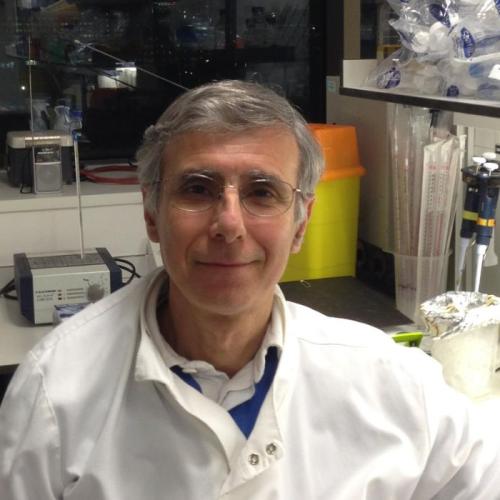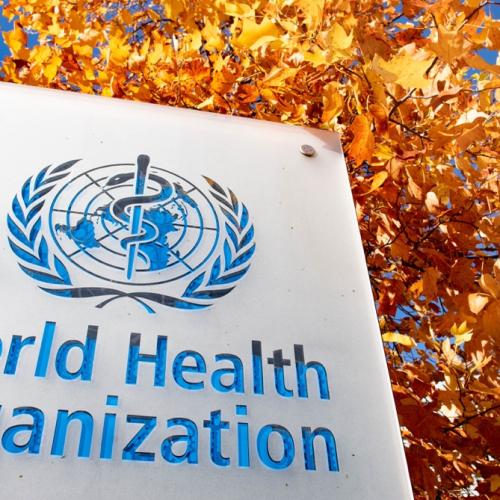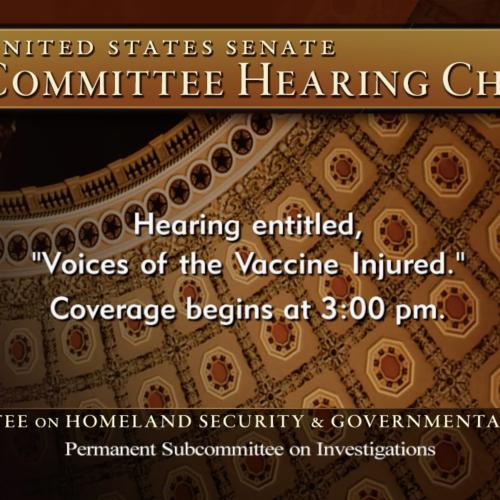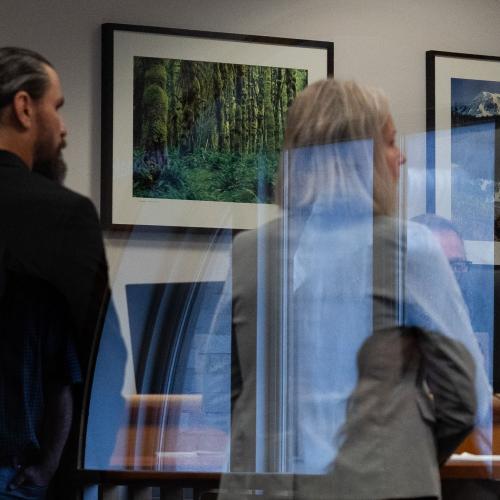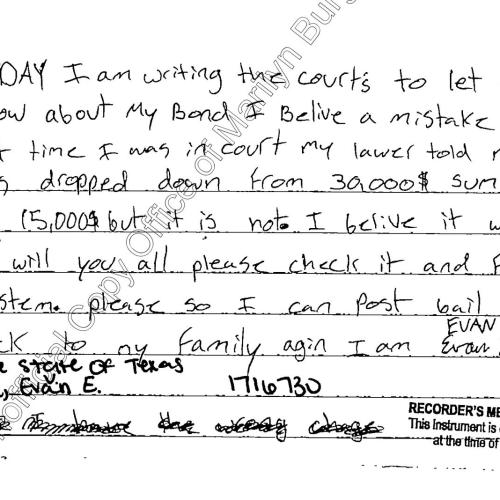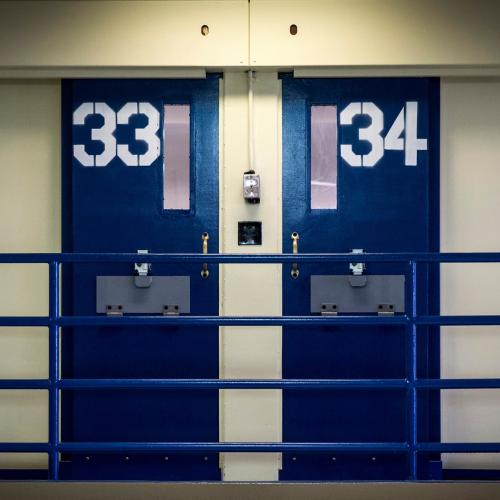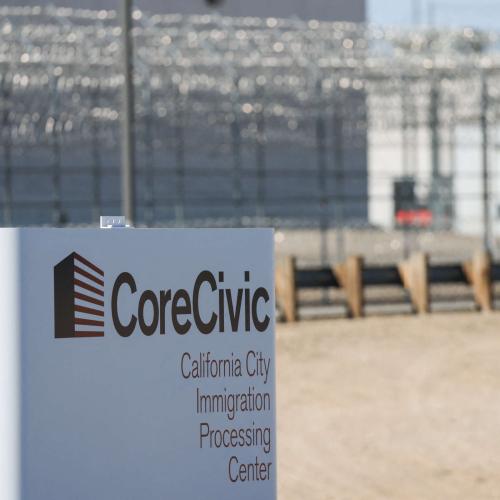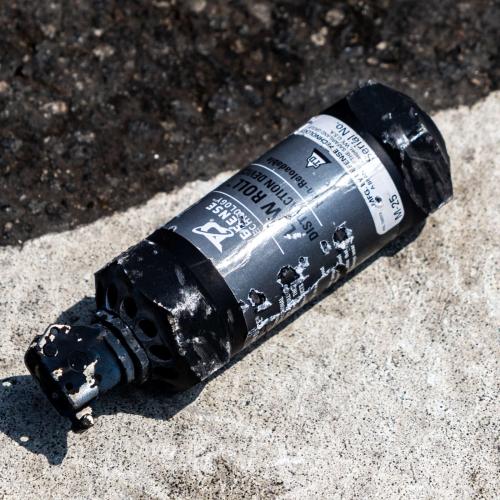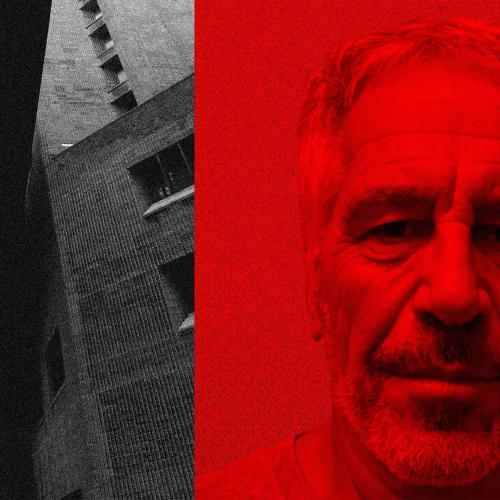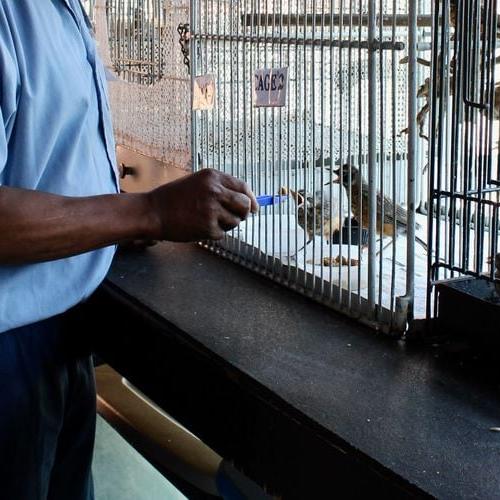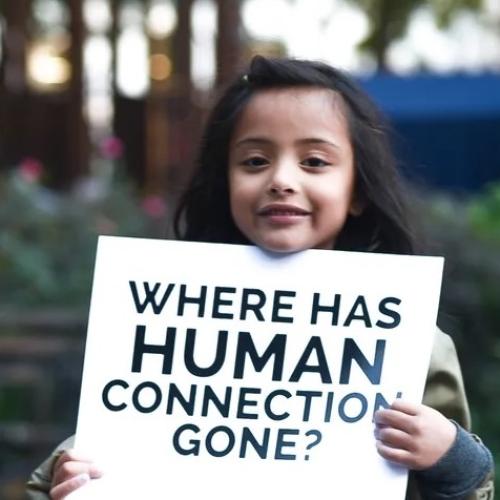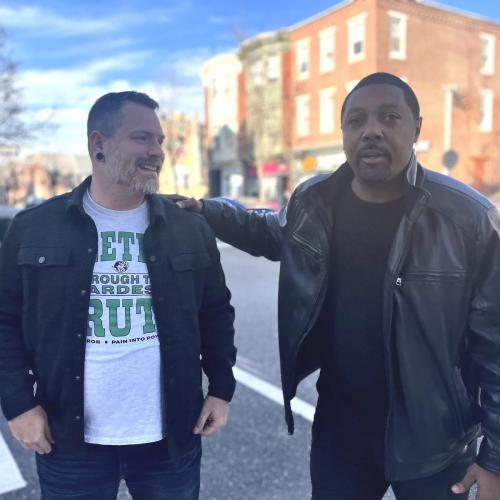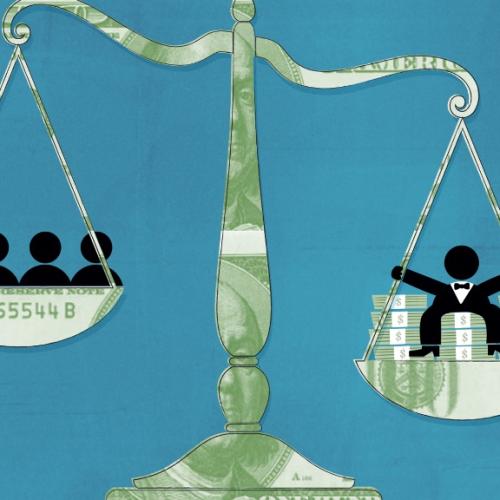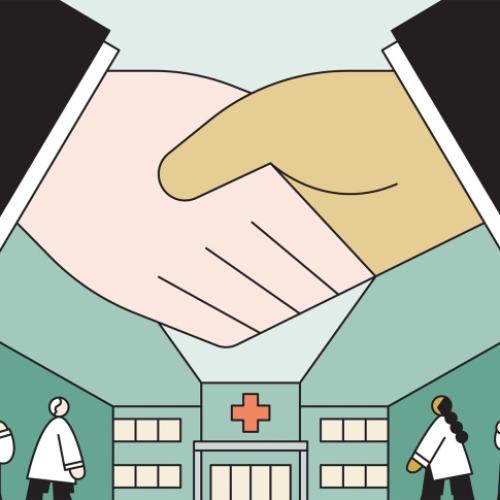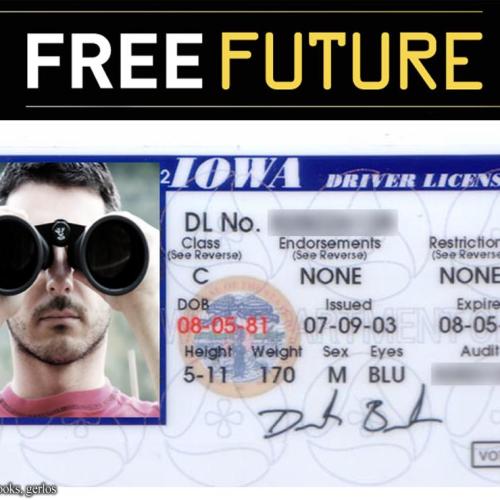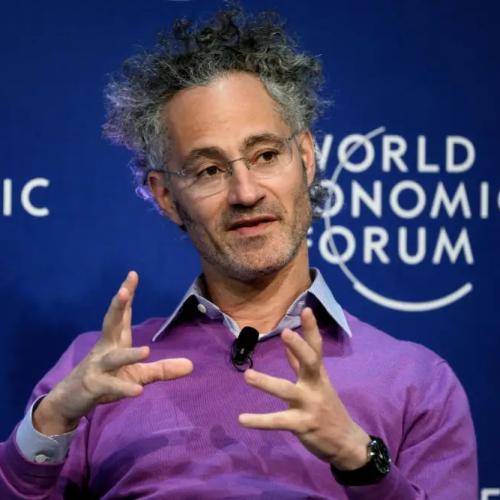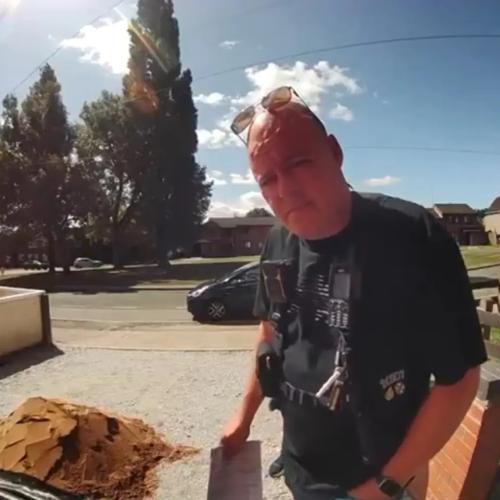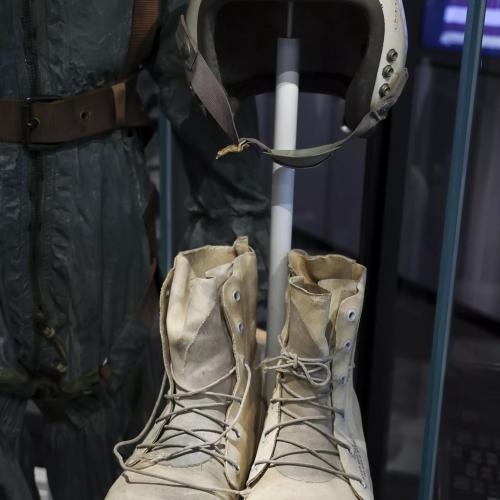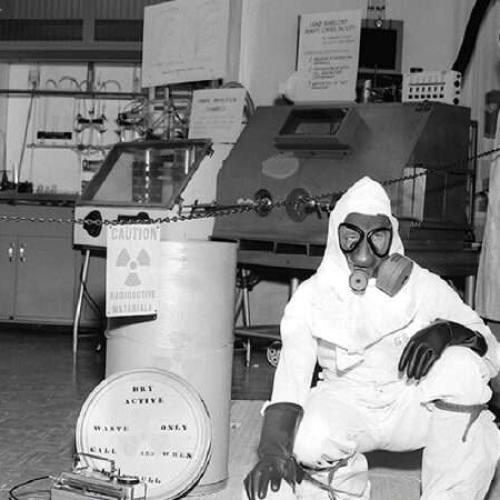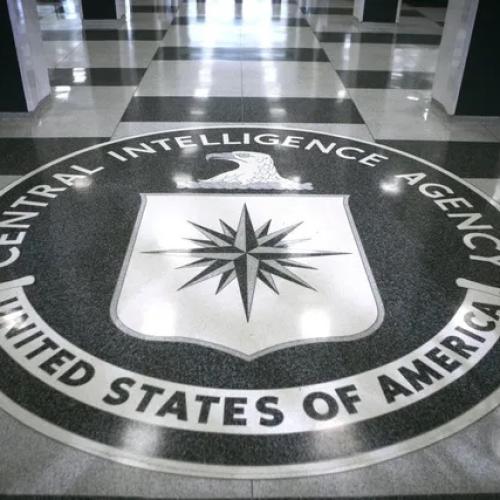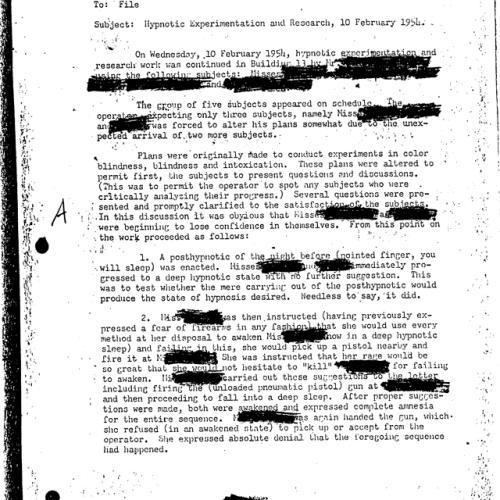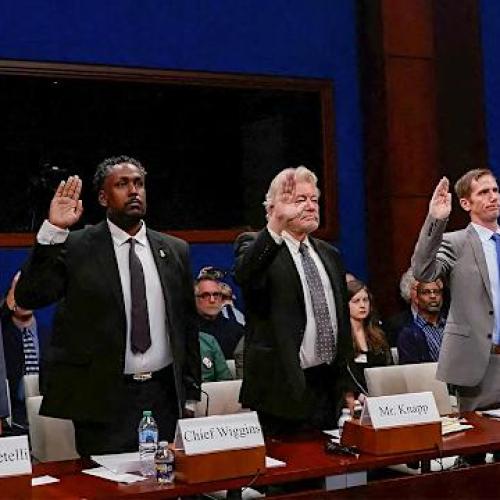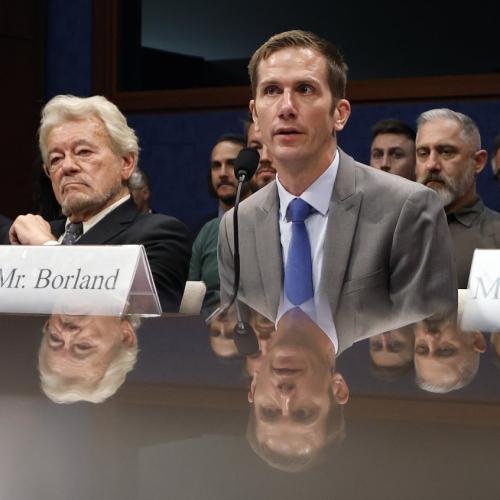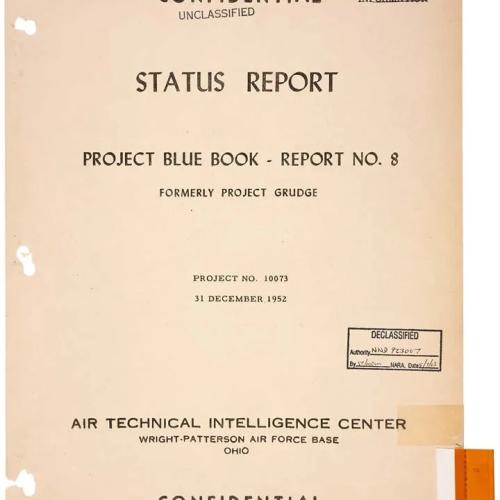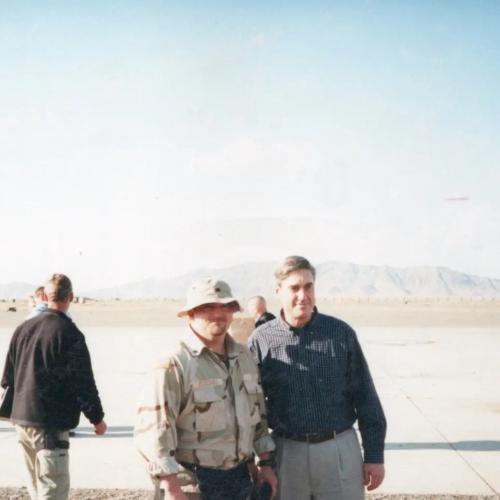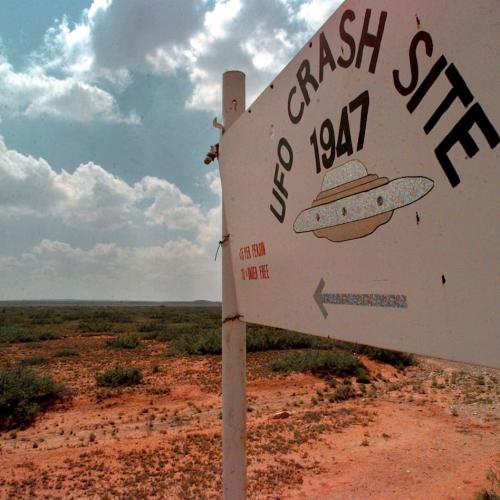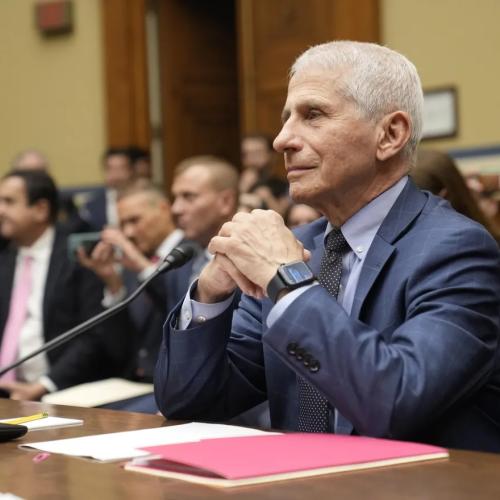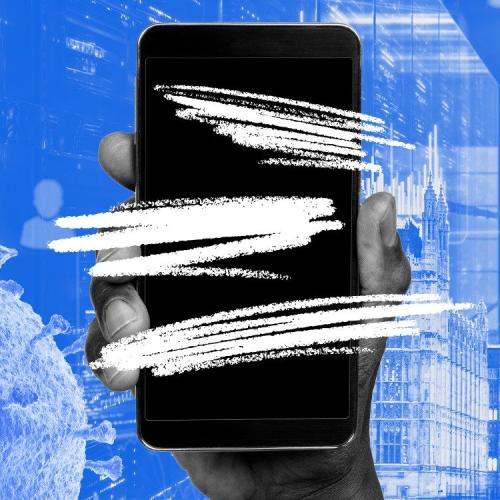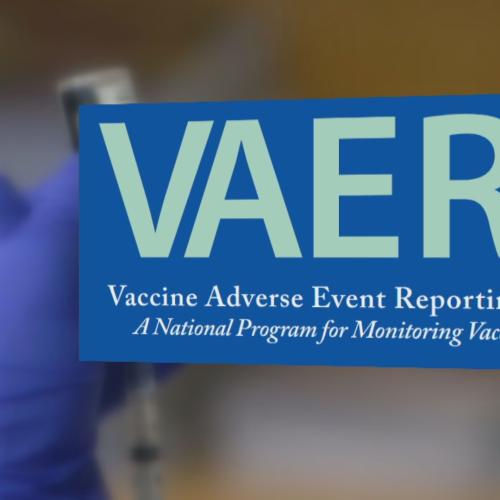Near-Death Experiences News Stories
Below are key excerpts of revealing news articles on near-death experiences from reliable news media sources. If any link fails to function, a paywall blocks full access, or the article is no longer available, try these digital tools.
For further exploration, delve into our comprehensive information center on near-death experiences.
Einstein once wrote about his friend Michele Besso, “Now he has departed from this strange world a little ahead of me. That means nothing. People like us…know that the distinction between past, present and future is only a stubbornly persistent illusion.” Could death, as we understand it, be a construct of our consciousness rather than a universal truth? Proposed by Dr. Robert Lanza, a respected stem cell biologist and author, biocentrism is a revolutionary theory suggesting that life and consciousness are not byproducts of the universe, but the very forces that shape it. According to biocentrism: Space and time are not external, objective realities. They are tools of our perception, shaped by conscious observation. Reality does not exist without an observer. Biocentrism places consciousness at the center of the universe. In doing so, it opens the door to reevaluating what death really means—if the self is not simply the body, its “end” might not be defined by physical decay. In the [two-slit experiment]: When unobserved, particles act like waves and pass through both slits simultaneously. When observed, they behave like particles and choose one path. Quantum physics further supports the biocentric view by demonstrating that the universe behaves differently when observed. Quantum entanglement shows that particles can be instantly connected across vast distances—what Einstein called "spooky action at a distance." This challenges our understanding of time and space, and suggests that reality is not locally bound or strictly linear. Redefining death redefines life. If consciousness persists in ways we don't yet understand, every aspect of human society—from science to ethics—will evolve.
Note: Explore more positive stories like this on near-death experiences and the mysterious nature of reality.
From vegetarians craving meat to changes in sexual preference, some organ transplant patients report changes to their personality reflecting those of the organ donor. A 2024 study claims to challenge "conventional views of memory and identity" by suggesting organs carry memories and emotions and that the findings raise "ethical and philosophical questions" about transplantation. For decades, researchers have studied whether memories and emotions could linger in the heart, and histories of medicine and emotion show why the question is important. In 2010, I wrote Matters of the Heart: History, Medicine, and Emotion, a history of the emotional, physical and spiritual significance of the heart. My research shows that, before the emergence of scientific medicine, the heart was considered the centre of emotion and memory. Memory and emotions are not merely biological phenomena, but driven by environments, experiences and relationships. They, like beliefs about the heart, are informed by cultural contexts. In Thailand or Japan, for instance, there is more pronounced medical interest in the spiritual heart – Japan wouldn't recognise brain death until 1985 for this reason. So, cross-cultural comparisons are needed to understand how far narratives of memory transfer in heart transplantation are universal. One bride-to-be found her father's heart recipient because she wanted him to walk her down the aisle.
Note: Read our latest Substack, How Consciousness Research Can Help Heal a Divided World to learn more about the mysterious phenomena of organ transplant personality changes. Explore more positive stories like this on near-death experiences and the mysterious nature of reality.
For most of my life, I saw my father as the ultimate provider; he worked long hours as a doctor and took pride in that he never missed a day of work. While we knew he loved us, he would rarely, if ever, say the words "I love you." But after an aneurysm, a helicopter ride to the hospital, and hours of surgery gave him a new perspective on life, I've noticed a change in him. His chances of survival were slim — at least that's what I assumed it meant when my brother, who's also a doctor, said: "This doesn't look good." He said: "I'm sorry. It's really hard to watch people you love when they are in pain." These words — from my father who showed little emotion and rarely said "I love you" — felt surreal. I wondered how he could be so selfless, worrying about others while he was in great pain. At that moment, I felt a deep affection for him. In the past, he was quick to state his opinion on any given topic; now I see him listening more, thinking before he shares his perspective. When I talk to him on the phone, his voice is softer, and before we hang up, he says, "I love you." Witnessing my father become more open has reminded me that I still have room to grow. I believe that my father and I both learned something that day. He learned to say "I love you," and I learned that even when people present themselves as impervious, it doesn't mean they're not feeling emotions. We all just have different ways of expressing them.
Note: Explore more positive stories like this on near-death experiences.
Ten days after 9/11, Rais Bhuiyan was shot at point blank range by a white supremacist. The near-death experience inspired him to set up World Without Hate, dedicated to breaking the cycles of violence. "As a result of the shooting, I ... lost my home, my job, my sense of security and my fiance," [said Bhuiyan]. "I focused on rebuilding my life slowly getting into restaurant working as a waiter. Many kind and caring Americans came forward to help redo my life. Forgiving my attacker was a multiple-step process. I realized by executing him we were simply losing human life without dealing with the root cause. I began to see him as a human being like me, not just as a killer. And I remember what it feels like to be on the brink the death, begging to God for a second chance. I learned about the verse in the Holy Koran chapter 5, verse 32 where it says that saving a life is like saving the entire mankind and taking a life is like taking the life of entire mankind. I was extremely convinced I needed to go the extra mile to save the life of the man. When we launched our global campaign to save the life of my attacker he heard from his lawyer that’s one of his victims was running a campaign to save his life. And he told his lawyer, I do not believe it, I never said sorry, I never apologized and destroyed their lives, especially his life, and now he forgave me and is running a campaign to save my life, he was released to tears, he said I don’t deserve that, I’m someone unforgivable. He wrote a letter to me from death row and in one paragraph this is what he said, that my stepfather taught me some lessons that I should have never learned. So when he learned about our campaign he went to tremendous transformation and talked about world peace, mercy, justice, peace, hate crimes and how he was wrong, what went wrong in his life, and how he ended up killing people. He was in peace before he was executed."
Note: Watch Bhuiyan's powerful 17-min PBS interview. For more, watch our latest 20-min video on what can transform a divided world, where you’ll hear the powerful words and stories from those at the edge of death, leaders who reached across deep divides, and even a former neo-Nazi who left hate. Explore more positive stories like this on human interest stories and near-death experiences.
She has been at the bedside of over 1,000 people globally in their last moments of life—from her home in the U.S. to Thailand and Zimbabwe. O’Brien, a registered nurse, had an impulse to move into hospice care over two decades ago and has since worked as an oncology nurse and a death doula, supporting those at the end of life. O’Brien’s recent book, The Good Death, aims to normalize the realities of death and the need to plan for the end. At the end of life, many people share what they didn’t do but knew they always wanted to do, O’Brien says.“We all are here for a purpose, and we all have gifts, and when we don’t share them and act upon those, that’s where the huge regret comes,” O’Brien says. Not “dipping into the unknown” or trying something new is a factor of having an abundance mindset, she says. When we consider our time sacred and limited, we are less afraid to take action on something that may excite us. “One of the things we don’t know is how many days we have,” she says. “When you get that feeling, or you have something that you want to do, don’t let your ego, the fear part of you, shut it down.” Many people at the end of life regret not being vulnerable enough to let themselves be loved and give love. They often share that they could not reach a level of forgiveness with someone else or themselves, O’Brien says. It’s essential to extend ourselves grace, know when to take ownership, and release guilt, she says. O’Brien encourages patients to envision the time they’re struggling to let go of and ask themselves if they did what they could in the moment with the information and resources they had.
Note: Explore more positive human interest stories and meaningful lessons from near-death experiences.
A new study from Canadian researchers reveals that near-death experiences transform not just how people view mortality, but how they approach their 9-to-5s. The research, published in the Journal of Management, Spirituality & Religion, found that after brushing against death, employees frequently reprioritize their professional lives. Many shift away from pursuing money, status, and career advancement toward seeking meaningful work and authentic relationships with colleagues and clients. Near-death experiences (NDEs) are deeply personal experiences that some people report after almost losing their lives. These experiences can include sensations such as floating above one’s body, reviewing moments from one’s life, encountering spiritual beings, and feeling a profound sense of unity and love. Many participants reported that traditional career achievements and financial success plummeted in importance following their close call with death. The researchers identified six major themes: insights and new realizations, personal transformations, reprioritization of work, job changes, motivation, and changed relationships. Most participants reported profound spiritual insights following their NDEs. These weren’t just abstract philosophical ideas but deeply felt revelations that reshaped their identities. Common realizations included beliefs that consciousness continues after death, that there exists a “collective oneness” among all people, and that life has an underlying purpose.
Note: Explore more positive stories like this about near-death experiences.
A former 'true atheist' has come forward to tell his story of the dramatic near-death experience that made him a believer and left him with a 'deep sense of love.' Jose Hernandez, from Canada, said his journey to the other side began with a brutal accident as an electrical engineer tending to roadside power lines. When his colleague crashed their utility truck on January 6, 2000, the then 46-year-old Hernandez was left with multiple broken ribs preventing him from breathing as emergency medical technicians raced him to intensive care. Despite his disbelief in the afterlife, Hernandez said that he spent those moments of deep physical pain seeking help from a higher power. Hernandez said his consciousness was soon transported through a dark otherworldly portal that led to a mysterious transitional realm of living light and color. He spent three minutes clinically dead, came back but fell back into the same state for another two minutes, which he said felt like hours as he watched his lifeless body in the hospital. [A] spirit-like figure [offered] him words of comfort as he transitioned to 'the other side.' 'I heard the voice next to me say 'Think of the your body as a car, and that car has like five million miles on it, and there's nothing we can do to fix it anymore. So you have to now say goodbye to your body,'' he remembered. This realm allowed him to reconcile with his deceased father. 'It was even more amazing because me and my father had a very hard relationship,' Hernandez noted. 'We had a lot of clashes and I don't ever remember saying to my father in life, 'I love you,' or he to me.' But all that changed when they met again in this realm. When I met my dad on the other side,' he told the podcast, 'I realized sometimes we may not be able to say something here, [but] we're gonna be able to say it somewhere else.'
Note: Watch a video of Hernandes talking about his experiences. Read more about the fascinating study of near-death experiences. Explore more positive stories like this on near-death experiences.
Dannion Brinkley says he has seen the other side at least three times. Brinkley was a U.S. Marine and a successful businessman, not very interested in spiritual matters. That changed in 1975 when a bolt of lightning struck a telephone pole, traveled down the phone line, and slammed into his body melting the phone he was holding. “It went into the side of my head above my ear, it went down my spine,” Brinkley said. He left his body, floated along with the ambulance as it raced to a hospital, and watched from above as doctors declared him dead. 28 minutes later he awoke in the hospital morgue. During those 28 minutes, Brinkley says his consciousness traveled through a tunnel, where he encountered a spiritual being of light, and underwent a grueling replay of his entire life. And then, in a flash, he says he was back. “If I didn’t go to hell ... nobody’s going to hell, okay,” Brinkley said. “So, when you learn you don’t die, when you learn you’re a spiritual being, you’re not going to go to hell. That’s enough to inspire you to change.” Brinkley put his beliefs into action. For decades, he’s been counseling ... his fellow veterans, assuring them they have nothing to fear from death. He has spent tens of thousands of hours at the bedsides of the dying. He has been with more than 2,000 people as they passed on. His passion led him to create a program called the Twilight Brigade ... to ensure that no military veteran should die alone.
Note: Read more about the fascinating study of near-death experiences. Explore more positive stories like this on near-death experiences.
A 2021 study published in Explore suggests that past life experiences have been reported across various parts of the world. Children often begin recalling past life memories around the age of 2 and gradually stop discussing them by about 9, when they’re well into their schooling years. Many children describe events, names, families or places from their alleged past life. Many also recall violent or unnatural deaths in their previous life, and about 20% participants mention an “intermission” period between lives, with an average gap of 16 months between a previous death and rebirth. Children can also display skills or behaviors they haven’t been taught, such as xenoglossy (speaking a language they’ve never learned). Research on near-death experiences, published in the Journal of Near-Death Studies, also suggests that survivors sometimes experience past-life memories, similar to those that young children in past-life recollection studies recall. Mr. David Moquin ... was in a coma and hospitalized with double pneumonia. “During that time, I experienced at least two events that felt like past lifetimes. The one that has haunted me for the past 24 years was that of burning to death in an airplane crash. Many years later a psychic told me that in my last lifetime I died landing a fighter plane on an odd single digit day in November 1944. I was born December 21, 1944,” Moquin explains. “My daughter, hearing the recording of the reading, googled and found that Captain Fryer was the only pilot that died on an odd single digit day that November, and that he died trying to land his burning P-51 Mustang. My favorite plane has always been the P-51. The model sits on my desk. My daughter asked me questions and I seemed to know the names of my wing commander, squadron commander, mother and father."
Note: Explore more positive stories like this on near-death experiences.
Sam Parnia’s medical specialty at the New York University Langone Health System is resuscitation. He also directs large clinical studies of heart attacks (cardiac arrest). That has brought him into contact with a lot of people who are on the brink. It has also strengthened his conviction that near-death experiences show that death is not the end of human consciousness. Hence his new book, Lucid Dying (Hachette 2024). From early on, he was puzzled by the relationship between the mind and the brain. He came to see that the message “from science” was not what he had been led to expect. "Although life and death remain a mystery, science is showing that contrary to what some philosophers, doctors, and scientists have argued for centuries, neither biological nor mental processes end in an absolute sense with death," [he said]. "There is much more to be discovered, but science does ... suggest that our consciousness and selfhood are not annihilated when we cross over into death and into the great unknown. In death, we may also come to discover that each of our actions, thoughts, and intentions in life, from the most minute, to the most extreme, do matter." Many believe that science proves — and must prove — that life beyond death is impossible. But it is difficult for science to refute, for example, veridical near-death experiences, where experiencers recount events that they could not have observed under natural circumstances.
Note: Explore more positive stories like this about near-death experiences.
Over the course of his reporting career, Sebastian Junger has had several close calls with death. In the introduction to his memoir, “In My Time of Dying” ... he describes his own near-drowning while surfing. On June 16, 2020, Junger found himself face-to-face with mortality in a way he’d never been. One minute he was enjoying quiet time with his wife at a remote cabin on Cape Cod in Massachusetts; the next, he was in excruciating pain from a ruptured aneurysm. “It never crossed my mind to start believing in God,” [said Junger]. “But what did happen was I was like, maybe we don’t understand the universe on a fundamental level. Maybe we just don’t understand that this world we experience is just one reality and that there’s some reality we can’t understand that’s engaged when we die. All this stuff happens — ghosts and telepathy and the dead appearing in the rooms of the dying — that’s consistent in every culture in the world. Maybe anything’s possible. If there’s ever an example of “anything can happen,” it’s the universe popping into existence from nothing. Two nights before I went to the hospital, I dreamed that I had died and was looking down on my grieving family. Because I had that experience, which I still can’t explain, it occurred to me that maybe I had died and ... was a ghost. I went into this very weird existential Escher drawing. Am I here, or not? At one point, I said to my wife, “How do I know I didn’t die?” She said, “You’re here, right in front of me. You survived.””
Note: Sebastian Junger is an American journalist, author and filmmaker focused on wartime issues. Explore more positive stories like this about near-death experiences.
A new study from the University of Virginia’s School of Medicine says that out-of-body experiences (OBEs), like near-death experiences, can lead to profound psychological transformations, including increases in empathy and emotional connectivity. The findings ... suggest that these altered states of consciousness transform how people connect with others, fostering greater compassion and understanding. In this state, the sense of self becomes less distinct, allowing individuals to feel a deeper connection to the world around them. “We propose that OBEs might engender these profound changes through the process of ego dissolution,” researchers explained. “Ego dissolution fosters a sense of unity and interconnectedness with others. These sensations of interconnectedness can persist beyond the experience itself.” Researchers report that 55% of individuals who had an out-of-body experience reported that the experience profoundly changed their lives, and 71% described it as having a lasting benefit. The researchers cite numerous personal accounts that illustrate the transformative power of OBEs. One woman described her experience as being surrounded by “100% unconditional love” and feeling deeply connected to everyone and everything around her. “In an instant, I became part of the Universe. I felt connected to everything. Connected to everyone. I was completely surrounded by 100% unconditional love. I did not want to leave!”
Note: Explore more positive stories like this about near-death experiences and the nature of reality.
Jimo Borjigin, a professor of neurology at the University of Michigan ... took the first close look at the record of electrical activity in the brain of Patient One after she was taken off life support. After Patient One was taken off oxygen, there was a surge of activity in her dying brain. Areas that had been nearly silent while she was on life support suddenly thrummed with high-frequency electrical signals called gamma waves. In particular, the parts of the brain that scientists consider a “hot zone” for consciousness became dramatically alive. Since the 1960s, advances in resuscitation had helped to revive thousands of people who might otherwise have died. About 10% or 20% of those people brought with them stories of near-death experiences in which they felt their souls or selves departing from their bodies. According to several international surveys and studies, one in 10 people claims to have had a near-death experience involving cardiac arrest, or a similar experience in circumstances where they may have come close to death. That’s roughly 800 million souls worldwide who may have dipped a toe in the afterlife. If there is consciousness without brain activity, then consciousness must dwell somewhere beyond the brain. Parapsychologists point to a number of rare but astounding cases. One of the most famous is about a woman who apparently travelled so far outside her body that she was able to spot a shoe on a window ledge in another part of the hospital where she went into cardiac arrest; the shoe was later reportedly found by a nurse.
Note: Read more about the fascinating field of near-death experiences. Explore more positive stories like this in our comprehensive inspiring news articles archive focused on solutions and bridging divides.
Scientists have observed a surge of energetic activity in the brains of dying patients, a discovery that reveals that our brains can be active even as our hearts stop beating, reports a new study. The results challenge a longstanding assumption that brains become nonfunctional as they lose oxygen during cardiac arrest, and could eventually open a new window into the weird phenomena associated with near-death experiences (NDE). Jimo Borjigin, an associate professor of neurology at the University of Michigan, has been interested in these questions since she first observed surges of activity in the brains of dying rats. The surges consisted of gamma waves, the fastest oscillations in the brain, which are associated with conscious perceptions, lucid dreams, and hallucinations. Now, Borjigin and her colleagues have discovered similar gamma activity in the brains of patients who died in the hospital while they were monitored by electroencephalogram (EEG) sensors, which record neural activity. The findings could ... help explain near-death experiences, which the study described as "a biological paradox that challenges our fundamental understanding of the dying brain, which is widely believed to be nonfunctioning" during death. "The dying brain was thought to be inactive; our study showed otherwise," said Borjigin, the senior author of the study. "As far as I am concerned, our study may be as good as it will ever get for finding neural signatures of near-death consciousness."
Note: Explore a treasure trove of concise summaries of incredibly inspiring news articles on near-death experiences.
New data from a scientific "accident" has suggested that life may actually flash before our eyes as we die. A team of scientists set out to measure the brainwaves of an 87-year-old patient who had developed epilepsy. But during the neurological recording, he suffered a fatal heart attack - offering an unexpected recording of a dying brain. It revealed that in the 30 seconds before and after, the man's brainwaves followed the same patterns as dreaming or recalling memories. Brain activity of this sort could suggest that a final "recall of life" may occur in a person's last moments, the team wrote in their study, published in Frontiers in Aging Neuroscience. Dr Ajmal Zemmar, a co-author of the study, said that what the team, then based in Vancouver, Canada, accidentally got, was the first-ever recording of a dying brain. "I never felt comfortable to report one case," Dr Zemmar said. And for years after the initial recording in 2016, he looked for similar cases to help strengthen the analysis but was unsuccessful. But a 2013 study - carried out on healthy rats - may offer a clue. In that analysis, US researchers reported high levels of brainwaves at the point of the death until 30 seconds after the rats' hearts stopped beating - just like the findings found in Dr Zemmar's epileptic patient. The similarities between studies are "astonishing", Dr Zemmar said. They now hope the publication of this one human case may open the door to other studies on the final moments of life.
Note: Read one of the most moving, miraculous accounts ever of a near-death experience. Explore a treasure trove of concise summaries of incredibly inspiring news articles which will inspire you to make a difference.
About fifty years ago, Dr. Bruce Greyson was eating pasta in the hospital cafeteria when his beeper went off. Greyson, a psychiatrist, was urgently needed in the ER to treat a college student who had overdosed. He called her name — “Holly” — and tried to rouse her. But she didn’t stir. The next morning, Greyson returned to work at the hospital. Holly stirred. “I remember you from last night,” she mumbled. “I saw you talking with Susan, sitting on the couch.” Suddenly Holly opened her eyes, looked Greyson in the face and added, “You were wearing a striped tie that had a red stain on it.” Greyson began studying these so-called near-death experiences (NDEs) from a scientific standpoint, collecting hundreds of stories from those who’ve had them. He discovered that ... many people who survive the jaws of death report strange out-of-body experiences. Since meeting Holly, Greyson has published hundreds of academic papers. His search for answers is chronicled in his new book “After: A Doctor Explores What Near-Death Experiences Reveal about Life and Beyond.” Near-death experiences are fairly common. Some 10 percent to 20 percent of people who come close to death report them — about 5 percent of the population. So what is going on? Greyson, who grew up in a scientific household and is not religious, says he doesn’t know. “But I think the evidence overwhelmingly points to the physical body not being all that we are,” he says. “There seems to be something that is able to continue after the body dies.”
Note: Explore a treasure trove of concise summaries of incredibly inspiring news articles on near-death experiences.
We've all heard the stories about near-death experiences: the tunnel, the white light, the encounter with long-dead relatives. Now some researchers are giving a closer neurological look at near-death experiences and asking: Can your mind operate when your brain has stopped? Pam ... Reynolds' journey began one hot August day in 1991. An MRI revealed an aneurysm on her brain stem. "The aneurysm was very large, which meant the risk of rupture was also very large," [Dr. Robert] Spetzler says. "And it was in a location where the only way to really give her the very best odds of fixing it required what we call 'cardiac standstill.'" "I was lying there on the gurney ... unconscious," Reynolds recalls. "I don't know how to explain this ... I popped up out the top of my head." She found herself looking down at the operating table. She could see 20 people around the table and hear what sounded like a dentist's drill. Soon after, the surgeons began to lower her body temperature to 60 degrees. It was about that time that Reynolds believes she noticed a tunnel and bright light. She eventually flat-lined completely, and the surgeons drained the blood out of her head. During her near-death experience, she says she chatted with her dead grandmother and uncle, who escorted her back to the operating room. As they looked down on her body, she could hear the Eagles' song "Hotel California" playing. A year later, she mentioned the details to her neurosurgeon. Spetzler says her account matched his memory.
Note: Read the entire fascinating story at the link above to learn more about this woman who had to die in order to live. Explore a treasure trove of concise summaries of incredibly inspiring news articles on near-death experiences.
Near-death experiences have gotten a lot of attention lately. Two recent books by doctors - Proof of Heaven, by Eben Alexander, who writes about a near-death experience he had while in a week-long coma brought on by meningitis, and To Heaven and Back, by Mary C. Neal, who had her NDE while submerged in a river after a kayaking accidenthave spent 94 and 36 weeks, respectively, on the [New York Times best-seller] list. Their stories are similar to those told in dozens if not hundreds of books and in thousands of interviews with NDErs, or experiencers, as they call themselves. Many of these stories relate the sensation of floating up and viewing the scene around ones unconscious body; spending time in a beautiful, otherworldly realm; meeting spiritual beings (some call them angels) and a loving presence that some call God; encountering long-lost relatives or friends; recalling scenes from ones life; feeling a sense of connectedness to all creation as well as a sense of overwhelming, transcendent love; and finally being called ... back into ones own body. There is something about NDEs that makes them scientifically intriguing. Many NDEs happen when a person is surrounded by an arsenal of devices designed to measure ... the body. Whats more, as medical technology continues to improve, its bringing people back from ever closer to the brink of death. This makes NDEs perhaps the only spiritual experience that we have a chance of investigating in a truly thorough, scientific way.
Note: For more along these lines, see concise summaries of deeply revealing news articles on near-death experiences from reliable major media sources.
Clinically, we understand death to mean the state that takes hold after our hearts stop beating. Philosophically, though, our definition of death hinges on something else: the point past which were no longer able to return. Those two were more or less the same until about 50 years ago, when we saw the advent of CPR. Modern resuscitation ... blew apart our understanding of what it means to be dead. Without many people returning from the dead to show us otherwise, it was natural to assume, from a scientific perspective, that our consciousness dies at the same time as our bodies. Over the last few years, though, scientists have seen repeated evidence that once you die, your brain cells take days, potentially longer, to reach the point past which theyve degraded too far to ever be viable again. People who survive medical death frequently report experiences that share similar themes: bright lights; benevolent guiding figures; relief from physical pain and a deeply felt sensation of peace. Because those experiences are subjective, it's possible to chalk them up to hallucinations. Where that explanation fails, though, is among the patients who have died on an operating table or crash cart and reported watching ... as doctors tried to save them, accounts subsequently verified by the (very perplexed) doctors themselves. How these patients were able to describe objective events that took place while they were dead, we're not exactly sure. But it does seem to suggest that when our brains and bodies die, our consciousness may not.
Note: For more along these lines, see concise summaries of deeply revealing news articles on near-death experiences. Then explore our near-death experience resource center for lots more fascinating, reliable information on this vital topic.
There is scientific evidence to suggest that life can continue after death, according to the largest ever medical study carried out on the subject. A team based in the UK has spent the last four years seeking out cardiac arrest patients to analyse their experiences, and found that almost 40 per cent of survivors described having some form of awareness at a time when they were declared clinically dead. Dr Sam Parnia ... who led the research, said that he previously [believed] that patients who described near-death experiences were only relating hallucinatory events. One man, however, gave a very credible account of what was going on while doctors and nurses tried to bring him back to life and says that he felt he was observing his resuscitation from the corner of the room. About the evidence provided by a 57-year-old social worker ... Dr Parnia said: We know the brain cant function when the heart has stopped beating. But in this case, conscious awareness appears to have continued for up to three minutes. The man described everything that had happened in the room. Dr Parnias study involved 2,060 patients from 15 hospitals ... and has been published in the journal Resuscitation. Of those who survived, 46 per cent experienced a broad range of mental recollections, nine per cent had experiences compatible with traditional definitions of a near-death experience and two per cent exhibited full awareness with explicit recall of seeing and hearing events or out-of-body experiences.
Note: See our near-death experience resource center for lots more fascinating, reliable information on this vital topic. For more along these lines, see concise summaries of deeply revealing news articles about near-death experiences.
Important Note: Explore our full index to revealing excerpts of key major media news stories on several dozen engaging topics. And don't miss amazing excerpts from 20 of the most revealing news articles ever published.













